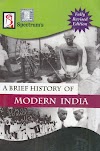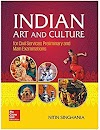Prime Minister and Council of Ministers (CoM)
Council of Ministers (CoM)
The cardinal principles of the Parliamentary form of the government are -
- Executive is drawn from the legislative only, i.e., members of Council of ministers are drawn from the Parliament (fusion of legislator and executive).
- President is the head of the state but not the head of the government. Head of the government is the Prime Minister.
- Council of minister is collectively responsible to the lower house of the parliament, i.e., Lok Sabha.
- The real executive powers are exercised by the Council of Ministers headed by the Prime Minister.
Article 74 - There shall be a Council of ministers headed by the PM to aid and advise the President to exercise his functions.
Article 75 1(A) - The total number of Ministers, including the Prime
Minister, in the Council of Ministers shall not exceed 15%. of
the total number of members of the House of the People.
It was added by 91st Constitutional Amendment Act 2003.
Council of ministers may include 3 categories of ministers -
- Cabinet Ministers
- Minister of State
- Deputy Ministers
Cabinet ministers - They are the senior most ministers and if they are given a portfolio, they will always head the ministry. They have a right to attend cabinet meeting.
Minister of State - They are the second ranked ministers who are normally not given an independent charge of a ministry. However, PM in his discretion can appoint any Minister of state as in charge of a full ministry also and then he will be referred as Minister of state with independent charge. Minister of state can attend cabinet meeting but only on invitation.
Deputy ministers - They are the junior most ministers who are not given an independent ministry. They are appointed to assist the cabinet ministers or minister of state or both in discharging their official duty.
Cabinet - Originally, Constitution of India did not mention about the word Cabinet but this word was added by 44th Constitutional Amendment Act 1978 under Article 352.
Council of minister is a composite body which includes three categories of ministers but being a larger body it seldom meets in full capacity at one time. However, there is a body within the council of ministers consisting of only the cabinet ministers called cabinet which mostly takes important decisions on behalf of whole council of ministers.
Cabinet is a compact body which meets regularly and takes all the important decisions of the government and is headed by the Prime Minister.
Practically union cabinet is the highest decision making body of the country which largely runs the administration of the country and decided upon the legislations to be passed.
The collective decisions of the cabinet automatically becomes the collective decisions of the council of ministers, binding on all the ministers.
Originally constitution did not recognise the body cabinet and it was formed and functioned under the conventions established in England. However, 44th Constitutional Amendment Act 1978 introduced the term Cabinet under Article 352 (National Emergency) and now it enjoys Constitutional recognition.
Cabinet Secretariat - Cabinet is assisted by an office called cabinet secretariat which is headed by Cabinet Secretory who is the senior most Civil servant of the country.
Cabinet meetings are exempted under RTI Act.
People present in a Cabinet meeting -
- Prime Minister (head)
- Cabinet Ministers
- Minister of State (Optional, only on invitation)
- Cabinet Secretory
Collective responsibility of the Council of ministers
Under Article 75(3), the Council of ministers are collectively responsible to the Lok Sabha which means once a collective decision is taken by the cabinet where the decision may relate to one or more ministries, then it becomes the collective decision of the whole council of ministers and the consequences of this decision will fall not only on the minister concerned but on all the members of the council of ministers.
There may be differences among the ministers at the stage of deliberation in the cabinet. However, once a collective decision is taken by the cabinet all the minister shall sink their differences and whole-heartedly support the collective decision.
Now if this collective decision is rejected by the Lok Sabha, it will amount to the defeat of the whole council of ministers for which the whole council of minister shall resign not only the ministers concerned.
It means that Council of ministers is a single term which stands together and sinks together.
Reason for the introduction of Collective responsibility of the Council of Ministers in the Constitution
- The purpose of collective responsibility is to ensure that all the ministers in the Council of minister share a common responsibility and thus guiding each other in taking decisions.
- Also Council of ministers must speak one language, i.e., must move in one direction without chaos.
- It also ensures that there is no dissent among the ministers once the collective decision has been taken.
Note -
If collective decision is rejected in the Lok Sabha, it does not automatically amount to the fall of the government.
Either the government introduced the Confidence motion to prove his majority (if fails, Council of ministers must resign) or the opposition introduced no confidence motion (if passed, Council of ministers must resign).
Individual responsibility - Article 75(2)
Every ministers are individually responsible to the President, which means that ministers hold the office during the pleasure of the President.
However, since the advice of the Prime Minister is available in this regard, the President can't remove an individual minister on his own discretion. Thus, in practice every ministers hold the office during the pleasure of the Prime Minister.
Reason for the introduction of Individual responsibility of the ministers
The individual responsibility concept is to ensure that every minister who disagrees with the collective decision of the cabinet and refuses to resign can be dropped form the Council of minister and collective decision can be made for which collective responsibility can be fixed on the council of ministers.
And thus, individual responsibility in a way ensures collective responsibility.
Prime Minister
Article 74 - There shall be a Council of ministers headed by the PM to aid and advise the President to exercise his functions.
Powers and position of Indian PM
- Primus inter Pares (i.e., first among equals) → PM is the only face of Council of ministers & the real executive power lies with the .
- Keystone of the Cabinet arch → PM advises the president to appoint Council of ministers.
The power and position of the Indian PM had been defined variedly by different thinkers. One school of thought beleive that PM is only 'first among equals', i.e., Primus inter Pares. He is the face of the team called Council of ministers and the executive decisions of the union is taken by the union council of ministers collectively and not by the PM single handedly. Constitution also in most of the places refers to the power of the council of ministers not the PM.
Though the more influential school of theory is one which considers PM as the keystone of the cabinet arch, i.e., he is not only the face of the council of ministers rather he is a very life of the council of ministers, seen from the following facts -
- If PM resigns or die, the whole council of ministers automatically goes out of the office.
- It is the right of the PM to select his ministerial clique an distribute portfolios among them.
- PM is the chief spoke person of the council of minister and it is his prerogative (right) to disclose important policies and decision to the parliament and public in his discretion.
- PM alone has the right to call information from any other minister.
- By using the concept of individual responsibility, PM can ensure collective responsibility can be fixed for the council of ministers.
- PM convinced the cabinet meeting and decided upon the agenda of the meeting and through these meeting he can give guidance or shape to overall administration of the country.
Thus all in all, PM is the most critical member of the entire Council of ministers. However, there are some factors which can affect his powers and postion.
- If PM is the man who brought electoral victory for his party in the election, then its powers will go up and he will get more acceptance in the parliament and public.
- If PM is heading a majority government, i.e., his government existence is not dependent on the mercy or support of any other party, then he can take his decisions without much opposition and appears a powerful PM.
- If PM's decision succeed, i.e., bring result, then his acceptance will increase within the government, within the parliament and among public and thus his powers and influence will increase.
- Presence of the members within the cabinet who are equally influential or more than the PM, then the PM's power shall get restricted.
- Equation of the PM with the President can affect his power.
Leader of the opposition
- Lok Sabha - largest opposition party having minimum 10% of seats.
- Rajya Sabha - must belonging to the largest opposition party in Lok Sabha (no 10% seats criteria).
- It has constitutional status
- He is equivalent to cabinet ministers.
Previous Article - The Vice President
Next Article - Parliamentary form of government
Notes on other subjects
Optional Subject
Note - This is my Vision IAS Notes (Vision IAS Class Notes) and Ashutosh Pandey Sir's Public Administration Class notes. I've also added some of the information on my own.
Hope! It will help you to achieve your dream of getting selected in Civil Services Examination 👍





0 Comments